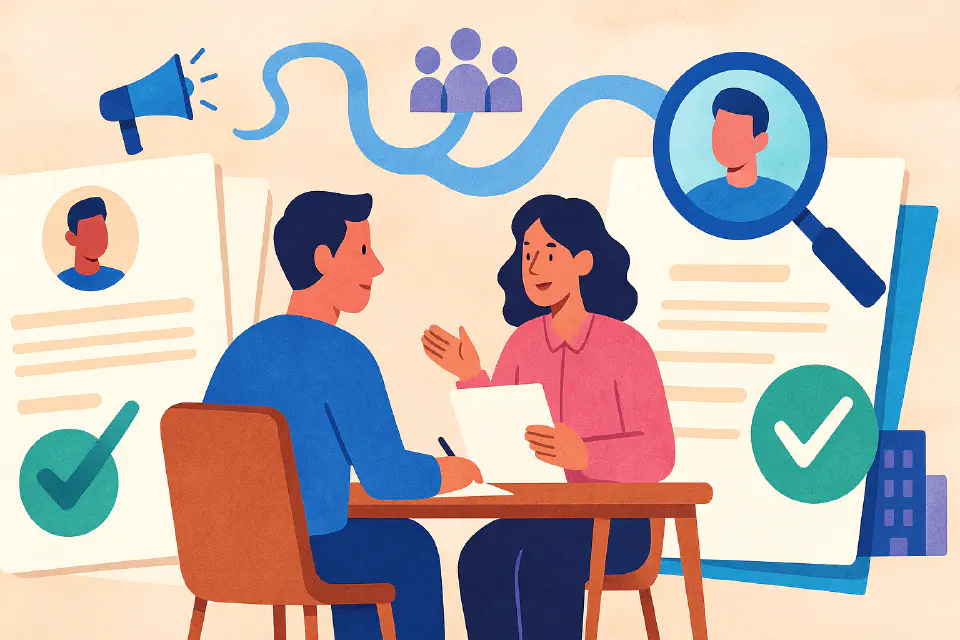
Screening, Interviewing & Selection
The interview process is not a formality — it’s your most critical quality control. And one of the most human moments in HR.
Great hiring is not just about attracting good candidates — it’s about choosing the right one in the right way.
A poor interview process leads to:
- Bad hires (which are expensive)
- Lost candidates (who won’t come back)
- Biased decisions (which hurt inclusion)
Let’s explore how to build a process that works — for the business and for the human.
Step 1: Application Screening
Screening can be:
- Manual (CV review, screening calls)
- Automated (ATS filters, skill tests, AI tools)
- Collaborative (involving the hiring manager or team)
Step 2: Interviewing
Structured vs. Unstructured
| Approach | Description | Risk Level |
|---|---|---|
| Unstructured | Casual chat, freestyle questions | ❌ High bias |
| Structured | Consistent questions and scoring across candidates | ✅ Low bias |
Structured interviews are more predictive, legally safer, and inclusive.
Types of Interviews
- Phone/Video Screenings – Quick fit and motivation check
- Skills Assessments – Task-based or job simulations
- Behavioral Interviews – “Tell me about a time…” questions
- Technical Interviews – Problem-solving or domain knowledge
- Panel Interviews – Multiple stakeholders involved
- Culture Interviews – Values, communication, adaptability
Use a mix that suits the role — but don’t overcomplicate it.
Interview Best Practices
- Share the process with candidates upfront
- Prepare interviewers with clear rubrics
- Take notes, not just impressions
- Use a diverse panel if possible
- Allow for follow-up or questions
Step 3: Evaluation and Selection
Selection should be:
- Based on agreed criteria
- Documented (to ensure consistency)
- Balanced between skills and potential
- Aligned with DEI and legal requirements
Tools like scorecards, weighted matrices, or hiring committees help reduce bias.
Avoiding Bias
Common biases include:
- Affinity bias (preferring people like us)
- Halo effect (overweighting one strong trait)
- Confirmation bias (looking for evidence to support your first impression)
Train your team. Review outcomes. Challenge patterns.
Candidate Experience Still Matters
Even if you reject someone, they should:
- Feel respected
- Know where they stand
- Be likely to apply again or refer others
This isn’t just good manners — it protects your employer brand.
Final Thought
Interviewing isn’t just about saying yes or no.
It’s about how you decide — and whether your process reflects your values as much as your job description does.
📌 Next page: Legal & Compliance Aspects of Hiring – What every HR team needs to know to stay on the right side of the law.